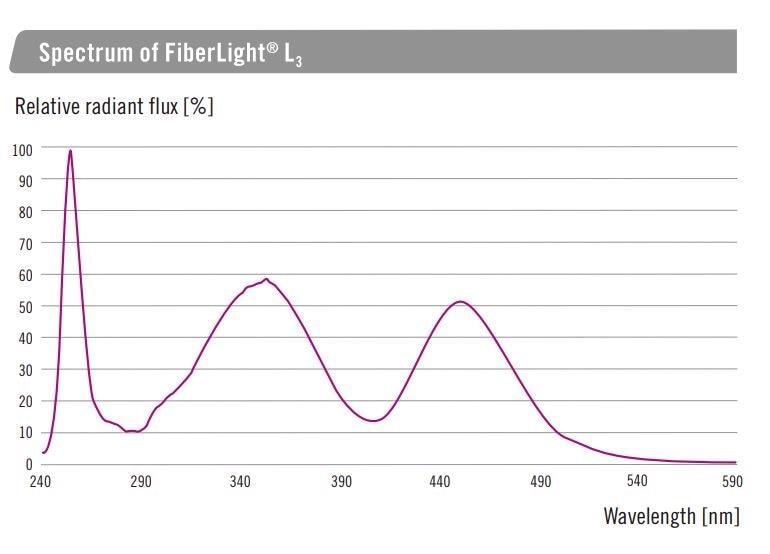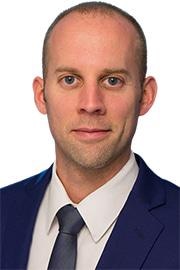An interview with Torsten Jenek, Head of Development Optics & Analytics at Heraeus Noblelight. Torsten outlines the development of a new UV-LED light module that combines the broad spectral range of UV lamps with the efficiency and robustness of LED light. Interview conducted at Pittcon 2019.
At Pittcon 2019, Heraeus launched the first broadband UV-LED light module, FiberLight® L3. Why did you think it was important to develop this product?
FiberLight L3 addresses a gap in the market. To do spectroscopy universally, you need a broadband light source. This is usually a gas discharge lamp, like a deuterium lamp, or a xenon flash lamp, but these are quite big and consume a lot of power.
 maximmmmum | Shutterstock
maximmmmum | Shutterstock
LEDs are starting to appear in the analytical space, but most of these products are single LED modules. This limits the number of substances you can analyze because you only have a single wavelength. It is this issue that we chose to address with the FiberLight L3.
The FiberLight L3 is a broadband UV-LED source that provides you with a broad UV spectrum while taking advantage of the small size and low power usage of LEDs.
How does the FiberLight L3 compare to other products on the market?
The problem can also be solved with multiple LED chips, but cost and power consumption increase with the number of chips. At the same time, if one chip in the array fails, you have a whole new spectrum, so the whole system fails. This limits the operating life and is inconvenient for the customer.
Also, instrument makers want to couple light efficiently into an analytical instrument by using a point light source. They want all the photons coming out of a single point, but if you arrange multiple LED chips as an array the area of the source is dispersed, resulting in your optical coupling becoming very inefficient.
That's one of the problems that we are addressing with our approach, because we have a single chip and therefore a single point light source.
What are the main applications of this product?
Some of the main applications that we're targeting are mobile applications in water quality monitoring and air quality monitoring. Historically, you typically needed to take a sample in the field, send it back to the lab, analyze it and then send the information back to the sampling point to react with it. FiberLight L3 helps to shrink the footprint of portable instruments for analysis on site.
Other areas that we're targeting are benchtop laboratory applications, environmental monitoring, and process monitoring. In environmental and process monitoring, lifetime is usually critical because units often run continuously.
Deuterium lamps have a lifetime of around 1000 - 2000 hours, whereas FiberLight L3 is LED based and has a lifetime of 5000 hours, that’s a five-fold difference in the amount of time before the lamp needs to be changed! This reduces interruptions and improves overall efficiency.
What advantages does the FiberLight L3 provide for equipment manufacturers?
The main advantages are the low power consumption of LED lamps and their long lifetime. The FiberLight L3 is also easy to integrate, because it comes with its own power supply and fiber coupler. This means that to become functional it just needs to be connected to an optical fiber on one side and 12 volts on the other side.
With deuterium lamps, you need a power supply, a heat sink and optics designed to couple light from the deuterium lamp into the instruments. We've tried to speed up the design process for OEM instrument engineers with this ‘plug and play’ module.
 Graphic provided by Heraeus Noblelight GmbH.
Graphic provided by Heraeus Noblelight GmbH.
Real-world examples of the FiberLight L3 were outlined in a poster presentation at Pittcon 2019. What were the main takeaway points from this presentation?
The poster we presented at Pittcon 2019 explores the underlying technology, as we moved away from being a light source manufacturer and began looking at the gap between gas discharge sources and current UV sources which have similar wavelengths. We explained how the technology was developed and optimized to cover the whole of the UV spectrum.
Why did you choose to release the new product at Pittcon 2019?
We wanted to launch our new product during the first half of this year, and Pittcon provided a great opportunity for us to do so. All of the important OEMs are here at Pittcon, so we felt it could provide some fantastic visibility.
What do the next few years look like for the company?
The trend that we're seeing at the moment is that equipment is becoming smaller and more portable. This is an area that is only going to grow and we’re doing our best to align ourselves with companies working in this space.
Previously, customers were quite happy to buy a lamp and design the power supply, heat sink, and optics all by themselves. Over the last few years, more and more analytical instrument OEMs are asking for drop-in solutions, and that’s where we come in. We select the best light source including the driver, the optic coupling, etc.
At the moment, we're working closely with our customers to figure out where the gaps are in terms of technology and market demand, and then design products that address those needs.
About Torsten Jenek
 Mr. Jenek is responsible for global Innovation activities for analytical light sources at Heraeus Noblelight. Previous positions include Product Manager for analytical light sources and R&D Project Manager for Deuterium lamps.
Mr. Jenek is responsible for global Innovation activities for analytical light sources at Heraeus Noblelight. Previous positions include Product Manager for analytical light sources and R&D Project Manager for Deuterium lamps.
He has more than 10 years of experience in the analytical light source industry including numerous patents and holds a degree in Physics from the University of Heidelberg, Germany.
About Heraeus Noblelight GmbH
Heraeus Noblelight GmbH, with its headquarters in Hanau, is a business unit of Heraeus Group and has subsidiaries in the USA, Great Britain, France and China. It is one of the technology- and market-leaders in the production of specialty light sources and systems.
The organization develops, manufactures and markets infrared and ultraviolet emitters, systems and solutions for applications in industrial manufacture, environmental protection, medicine and cosmetics, research, development and analytical measurement techniques.
Disclaimer: The views expressed here are those of the interviewee and do not necessarily represent the views of AZoM.com Limited (T/A) AZoNetwork, the owner and operator of this website. This disclaimer forms part of the Terms and Conditions of use of this website.